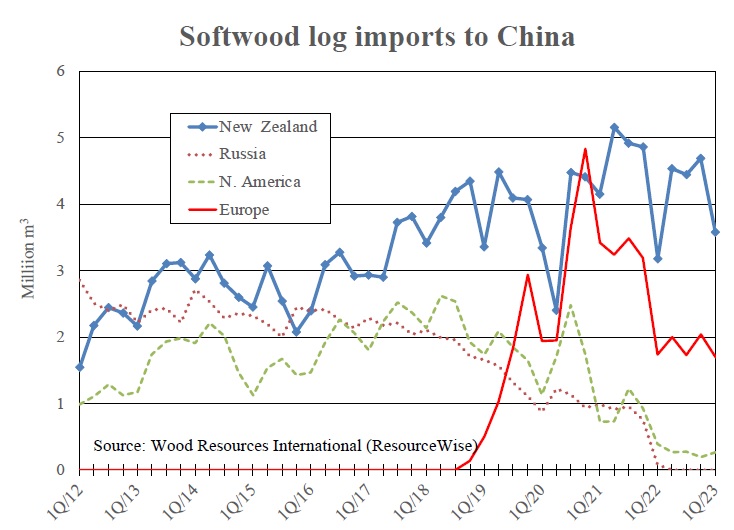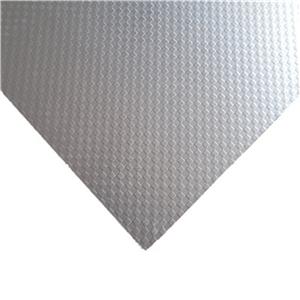China will expand timber imports
As of 2019, China has imported nearly 100 million cubic meters of RWE (log equivalent) of cork logs and lumber to meet the growing demand for forest products in the domestic market. Since then, wood consumption has declined and imports of forest products have fallen to levels not seen in more than a decade. China imported about 12 million cubic meters of logs and timber (RWE) in the first quarter of 2023, almost half of the peak in the third quarter of 2020 and the second lowest quarterly import volume in a decade, IPRI reported.
According to the World Bank, China's economy has been hit hard during the pandemic, with GDP growth expected to slow to 3% in 2022, compared to an average annual growth rate of 9% between 1978 and 2021. The economy is expected to rebound to just over 5% growth in 2023.
The main reason for the sharp decrease in log imports in China is the lack of supply following the implementation of the log export ban in Russia in January 2022. Russia remained China's largest supplier of logs until New Zealand overtook it in 2012. Since then, shipments to Russia have continued to decline, falling to zero in 2022. With log supplies from Russia, Australia, Canada and the United States falling sharply over the past five years, New Zealand and Europe have become China's top two suppliers.

In the first four months of 2023, New Zealand accounted for 58% of China's total log imports, followed by Germany (14%), Poland (5%), the United States (5%), Canada (4%) and Japan (4%). The outlook for shipments in North America and Europe will decline, ultimately leaving New Zealand as the only remaining major supplier of logs. Therefore, China needs to look for opportunities to increase imports of wood instead of logs to meet future wood demand.




